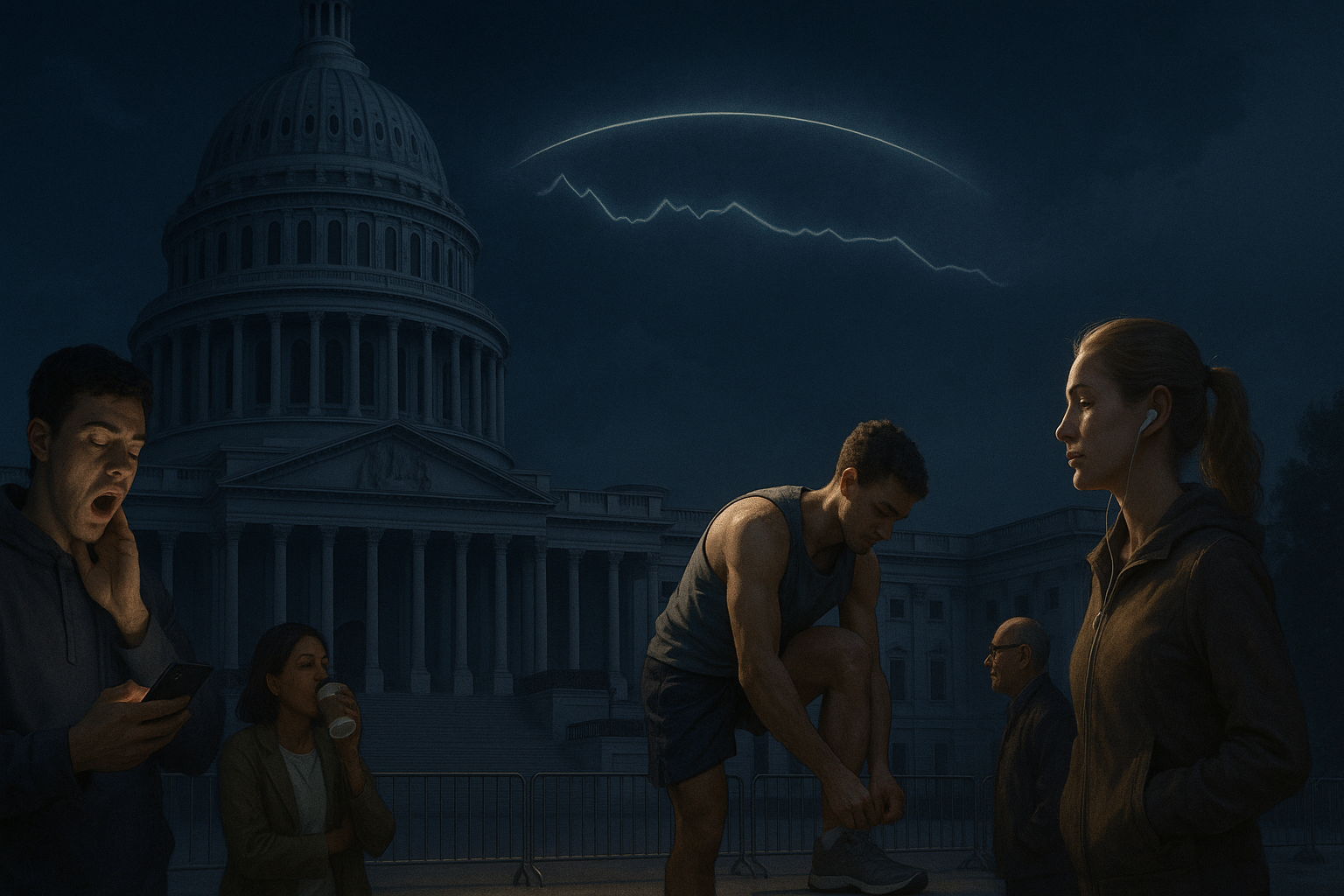The federal government has gone dark—again.
When the clock struck midnight on October 1st, Washington slipped into its 22nd shutdown since 1976, continuing that peculiarly American tradition where budget deadlines are treated more like suggestions than actual deadlines.
And how did Wall Street respond to this latest bout of political theater? With all the enthusiasm of someone watching a rerun of a mediocre sitcom. The major indexes barely flinched Tuesday. They didn't even drop a half-percent. I've seen stronger market reactions to minor Fed officials clearing their throats at obscure economic conferences.
There's a pattern here that's become so predictable you could set your watch by it. I call it the "Shutdown Discount Curve"—Wall Street has essentially baked these political tantrums into their calculations. They've seen this movie before. Heck, they've memorized the script.
Look, investors understand that while 900,000 federal workers are being told to stay home without pay (a particularly cruel form of political collateral damage), the government doesn't actually shut down in any meaningful sense. Air traffic controllers keep planes from colliding. Border agents still patrol. Social Security checks—thankfully—continue flowing to mailboxes nationwide.
These shutdowns remind me of that neighbor who threatens to move every time property taxes go up. Lots of dramatic sighing and furniture rearrangement, but they never actually leave.
The economic damage? Economists estimate we'll see about 0.1 to 0.2 percentage points shaved off GDP for each week this foolishness persists. Not nothing—but hardly catastrophic in our $26 trillion economy. We waste more economic output sitting in traffic on the Beltway during a typical Monday morning.
What fascinates me is how shutdowns create this bizarre sorting system for government functions. Some are "essential," others "non-essential." Border security? Essential. Food inspections? Mmm, not so much. Social Security payments must continue, but that student loan application you were hoping to process? Take a number and maybe bring a sleeping bag.
There's something deeply revealing—disturbing, even—about which government functions we've collectively decided we can temporarily live without. Park rangers? Sorry, deemed expendable. Pentagon procurement officers signing billion-dollar defense contracts? Report immediately!
(I once interviewed a furloughed EPA scientist during the 2013 shutdown who told me, "Apparently protecting the environment is considered optional." She wasn't wrong.)
If history is any guide—and in these situations, it usually is—markets typically weather these storms with surprising resilience. Since 1981, the S&P has experienced notable pullbacks in only half of all shutdowns. None have triggered a recession. During the record-setting 35-day shutdown of 2018-2019, the S&P actually climbed more than 10%. Which suggests either remarkable economic resilience or that investors have simply learned to tune out Washington's dysfunction like an annoying car alarm in the distance.
The real costs aren't always captured in market indices. There's the obvious hardship for workers facing missed paychecks (yes, they typically receive back pay, but try explaining that to your mortgage company). Then there's what economists call opportunity cost—delayed economic reports, postponed regulatory decisions, and the general sand in the governmental gears.
One wonders about the cumulative effect on institutional knowledge and employee morale. If your employer regularly sent you home without pay because management couldn't agree on basic operating procedures, wouldn't you update your LinkedIn profile?
The Friday jobs report will likely be delayed, temporarily depriving economists of their monthly ritual of overanalyzing employment figures. National parks have closed their visitor centers while remaining physically accessible—creating that uniquely American situation where you can visit Old Faithful but good luck finding a bathroom.
These shutdowns typically end when political pain becomes too acute for one side. Who blinks first? That's always the question hanging in the air like stale cigar smoke in a congressional cloakroom.
Until then, the economy continues in this strange partial-function mode, essential services trudge along, and markets maintain their collective shoulder shrug.
After all, we've seen this political drama before. And as veteran Wall Street traders might say: past dysfunction is no guarantee of future crisis. Though it's a pretty good predictor.
